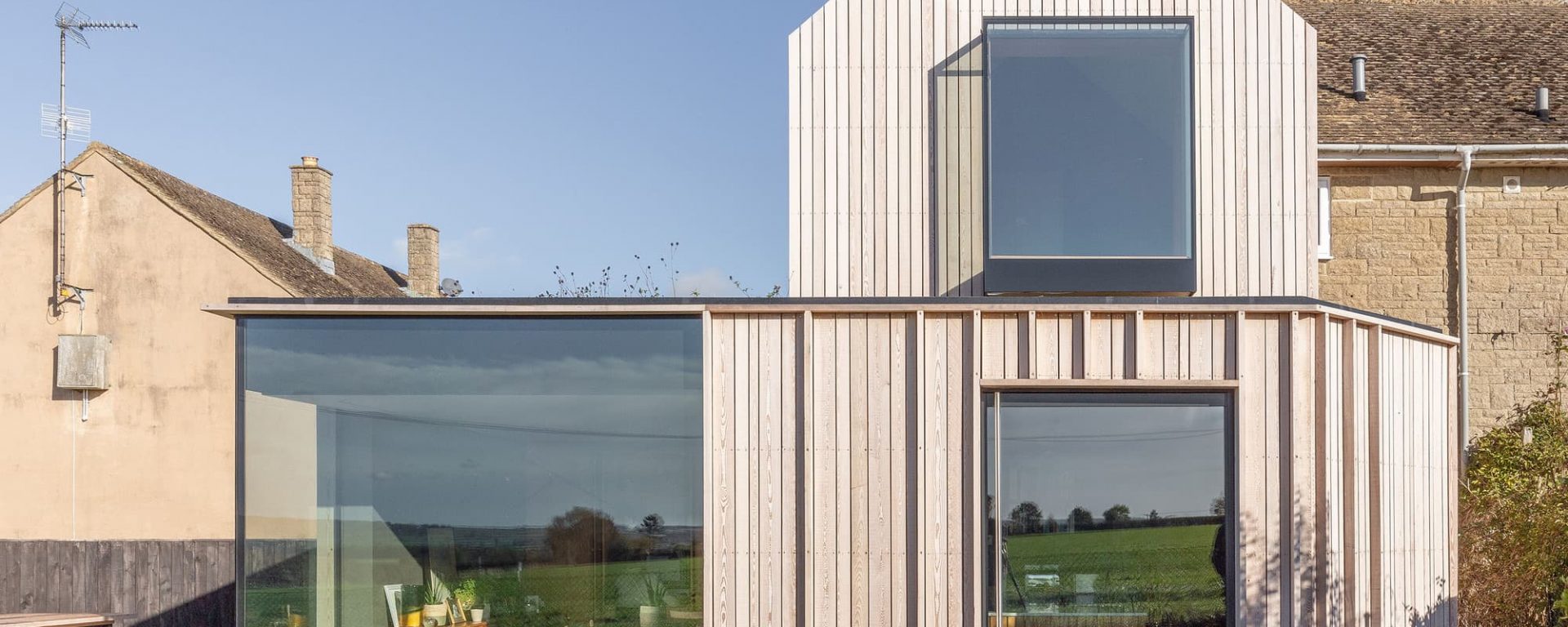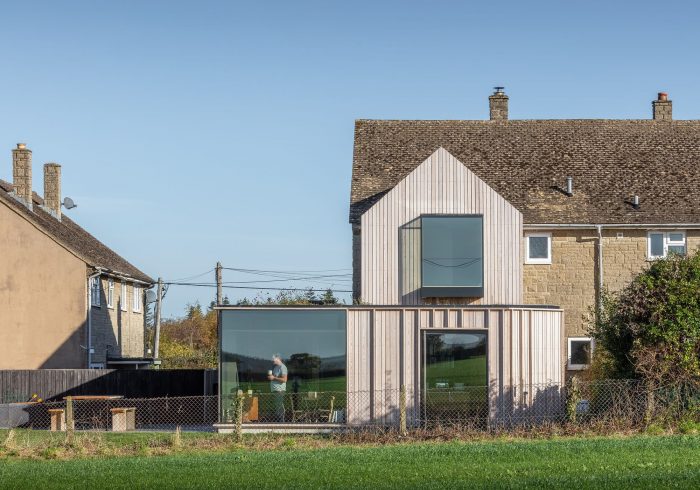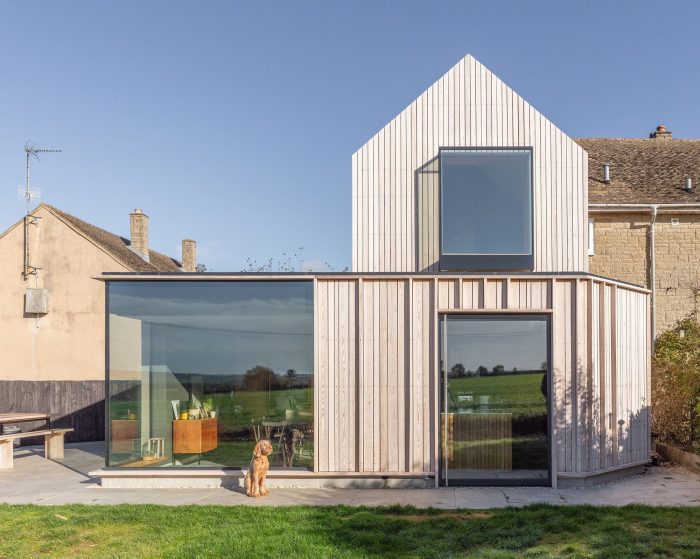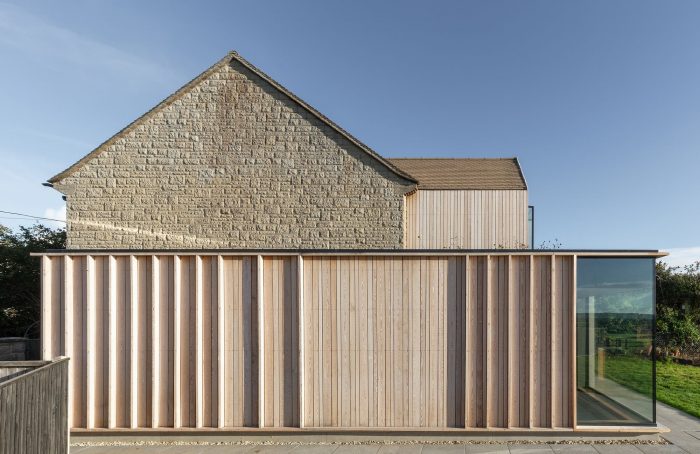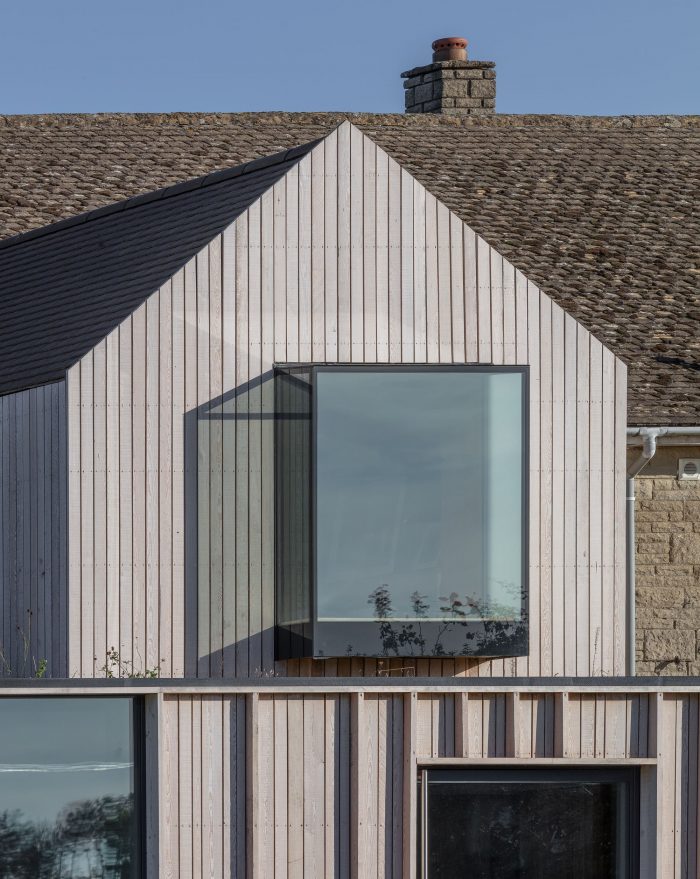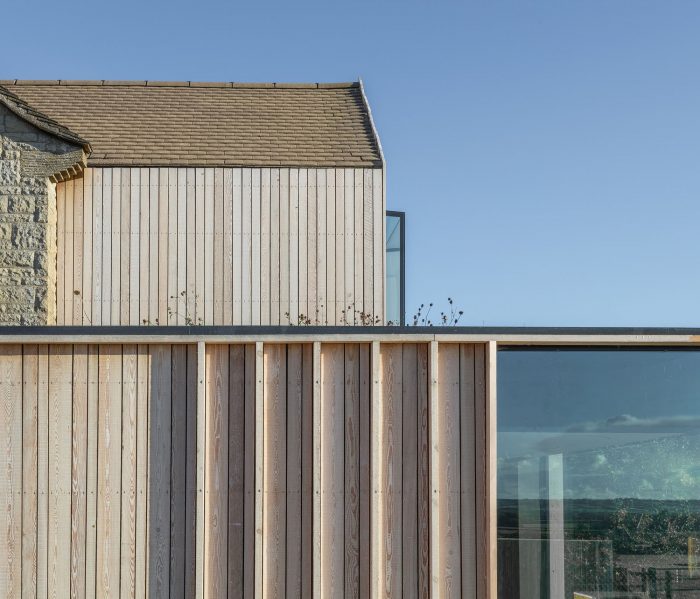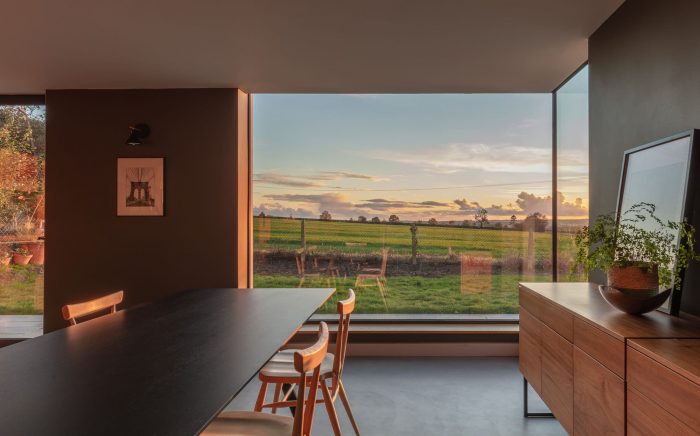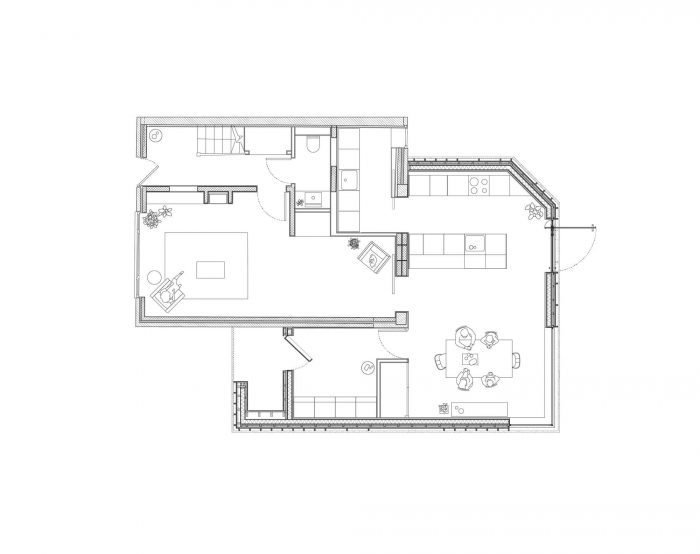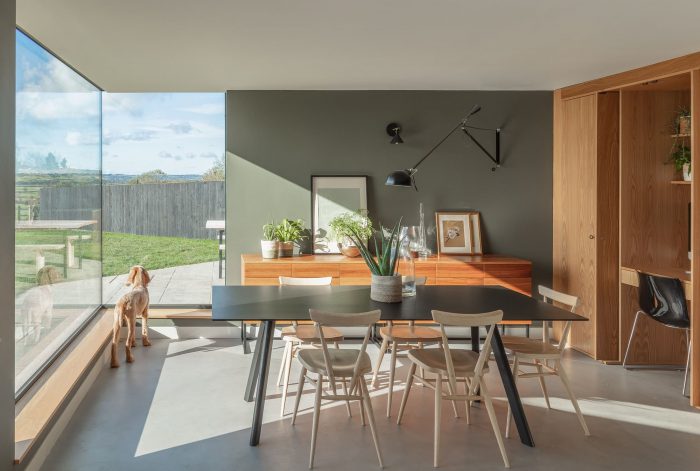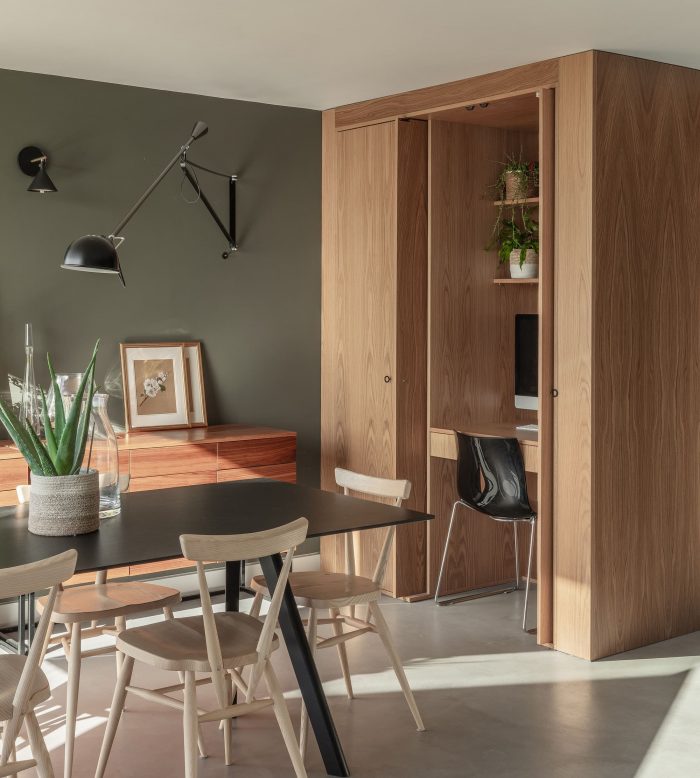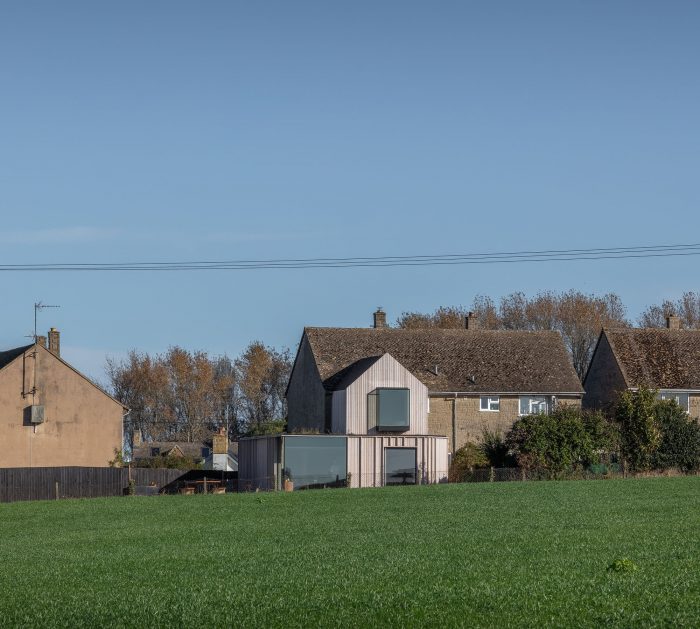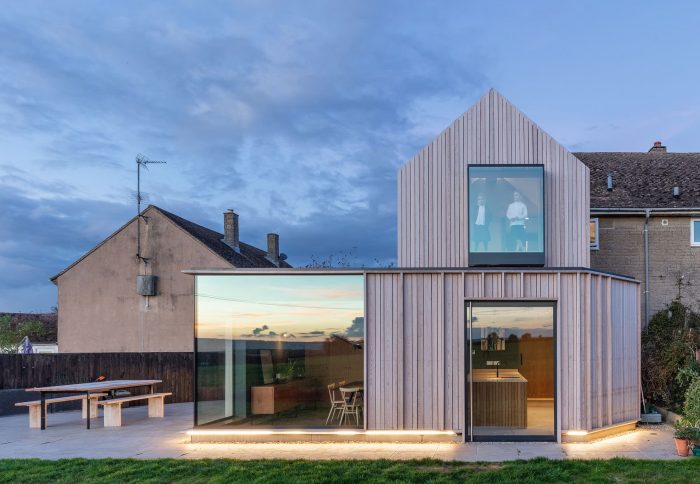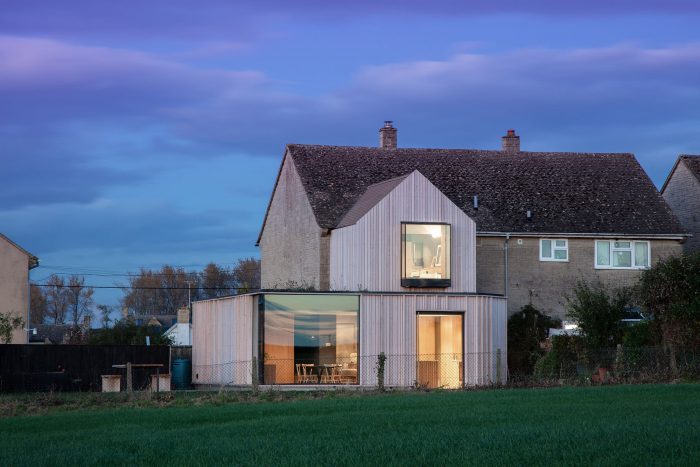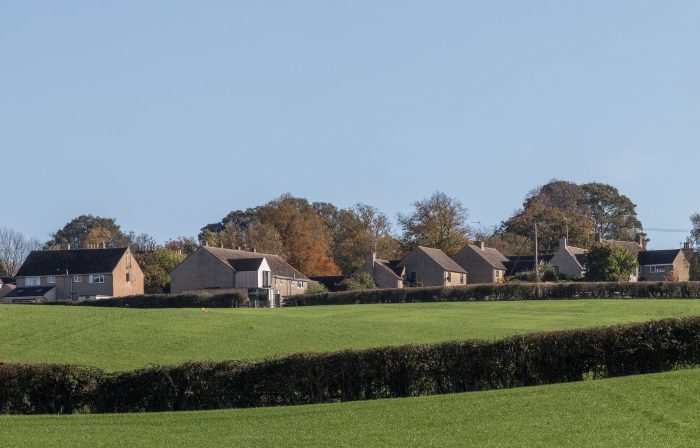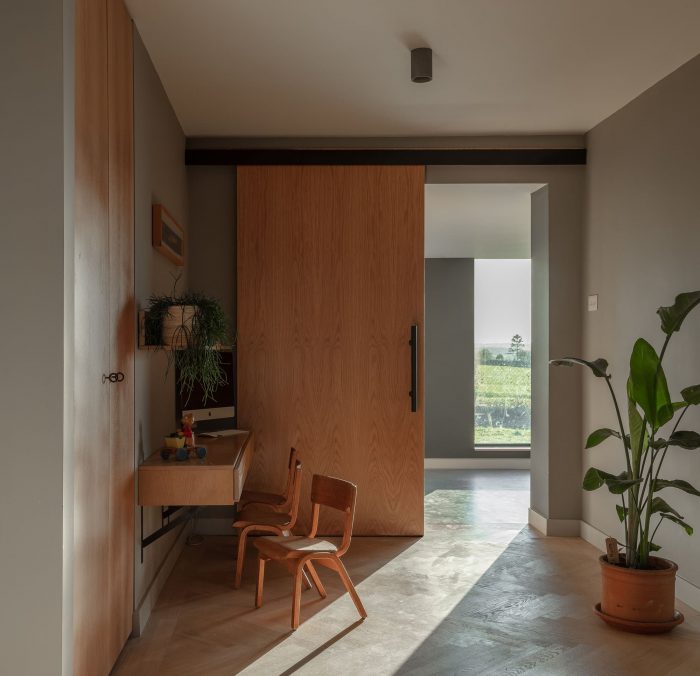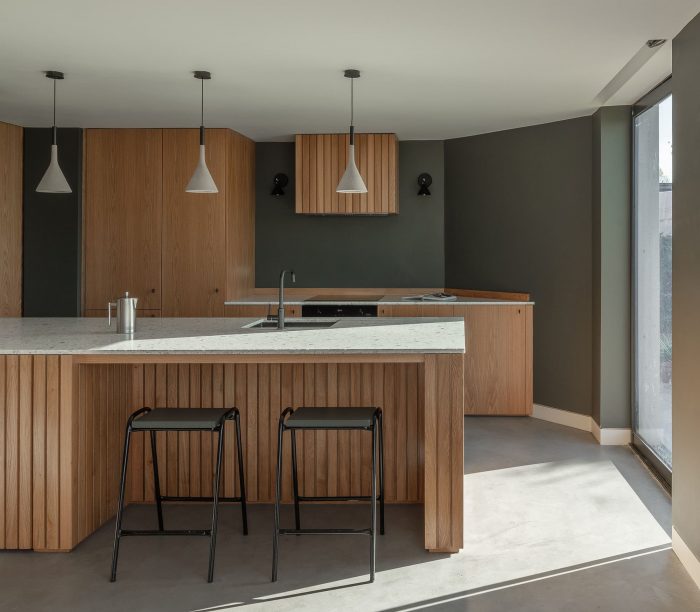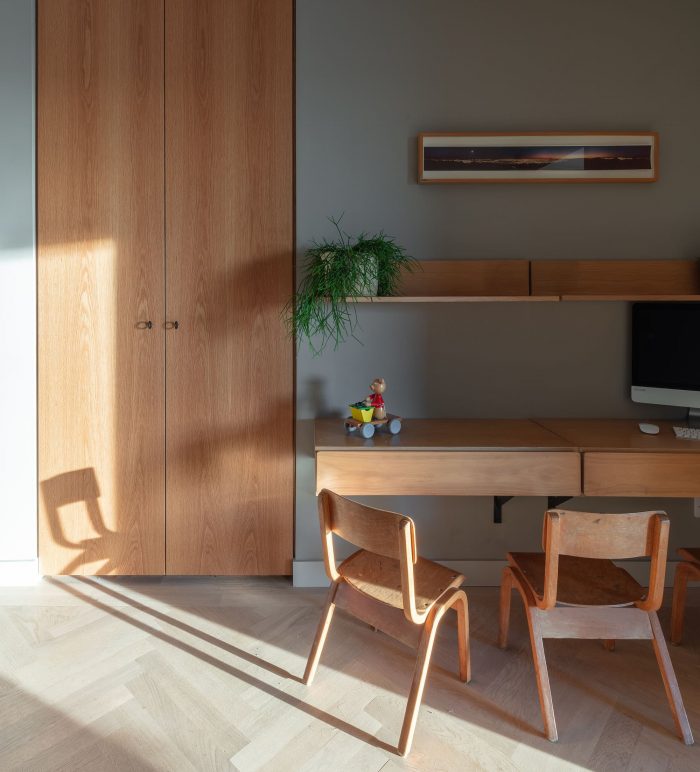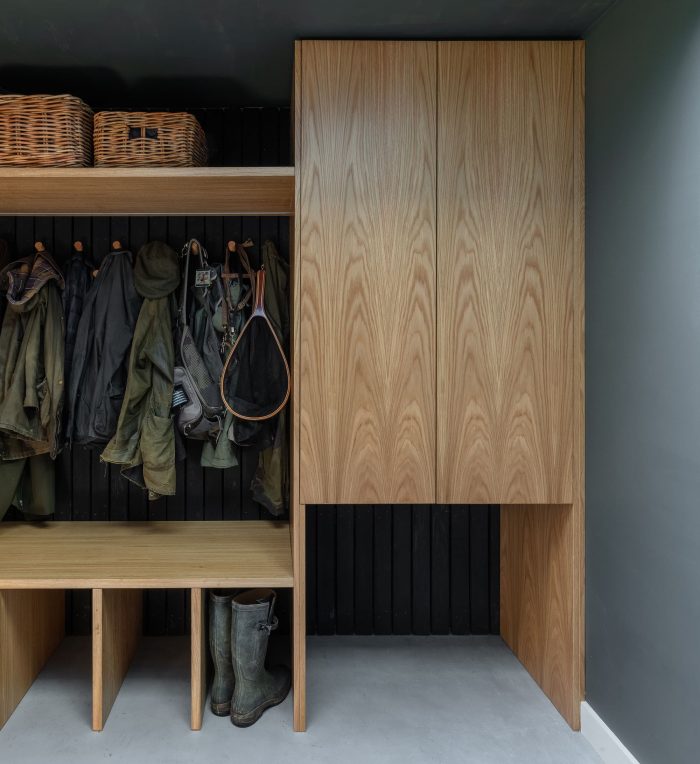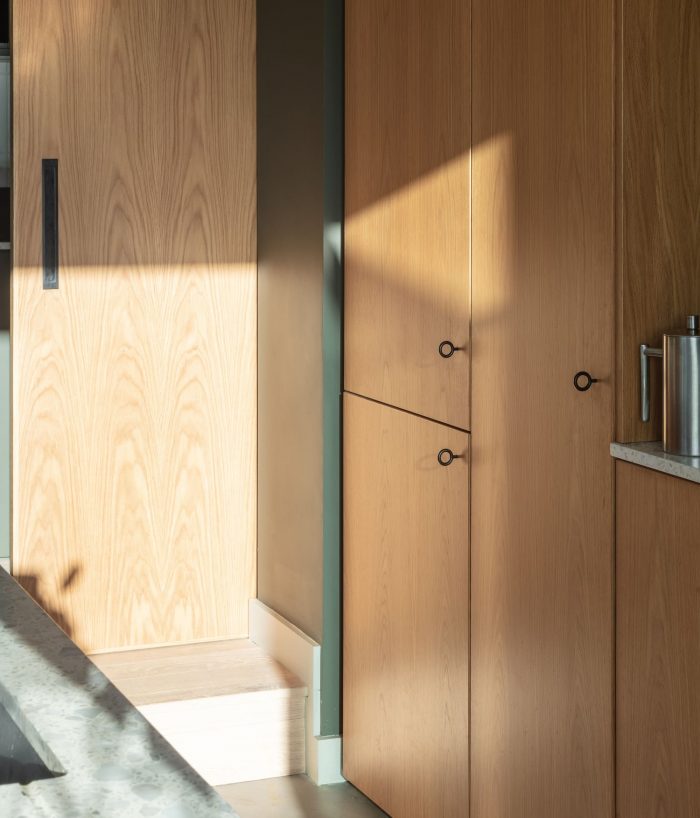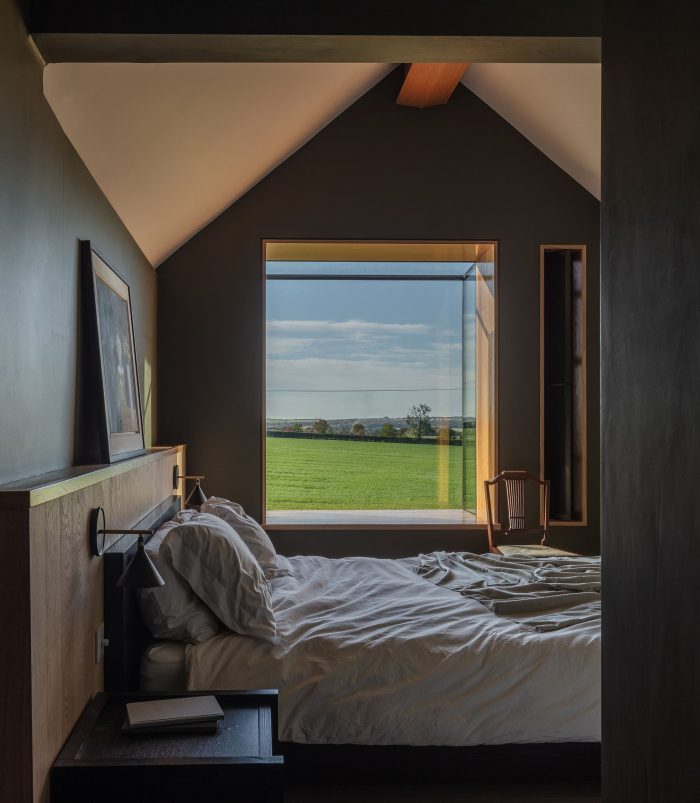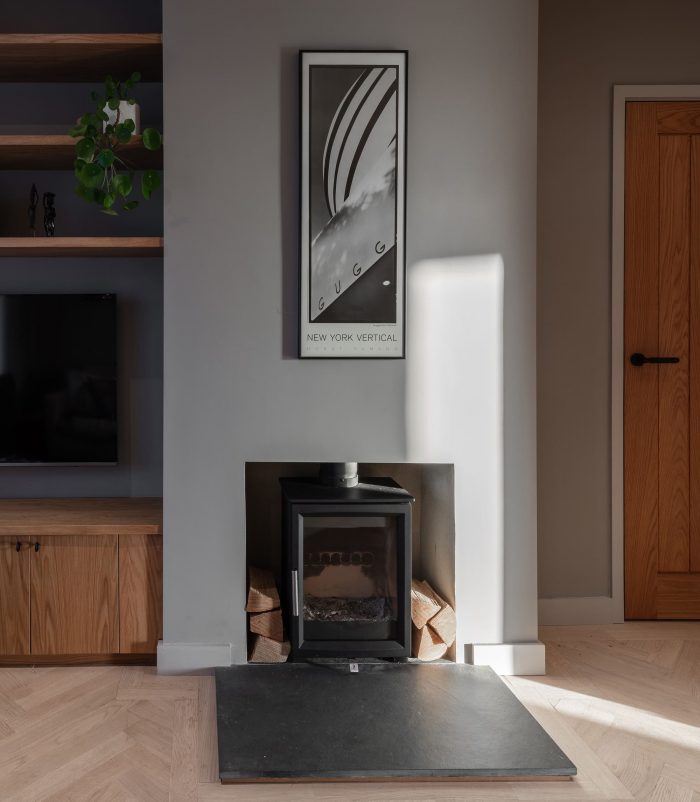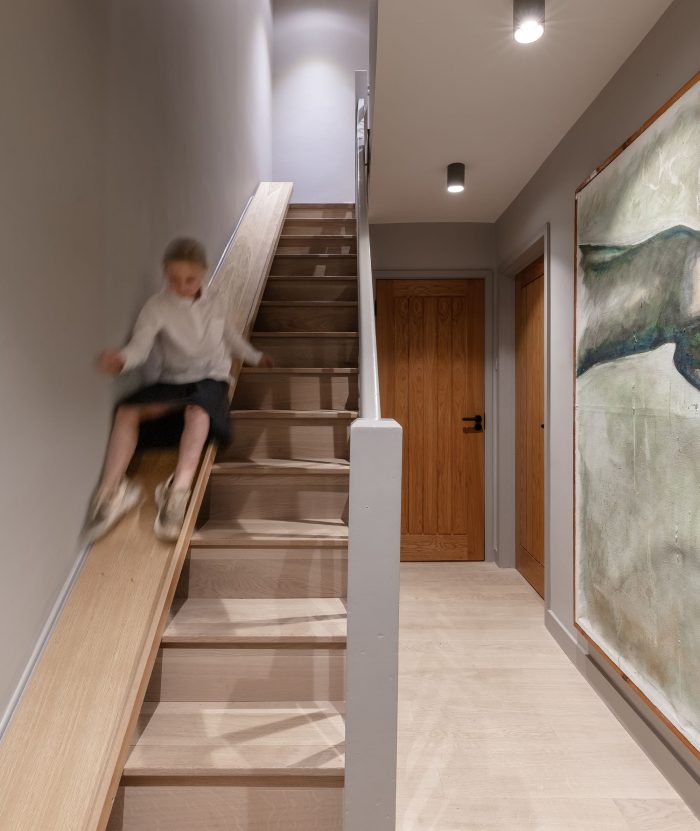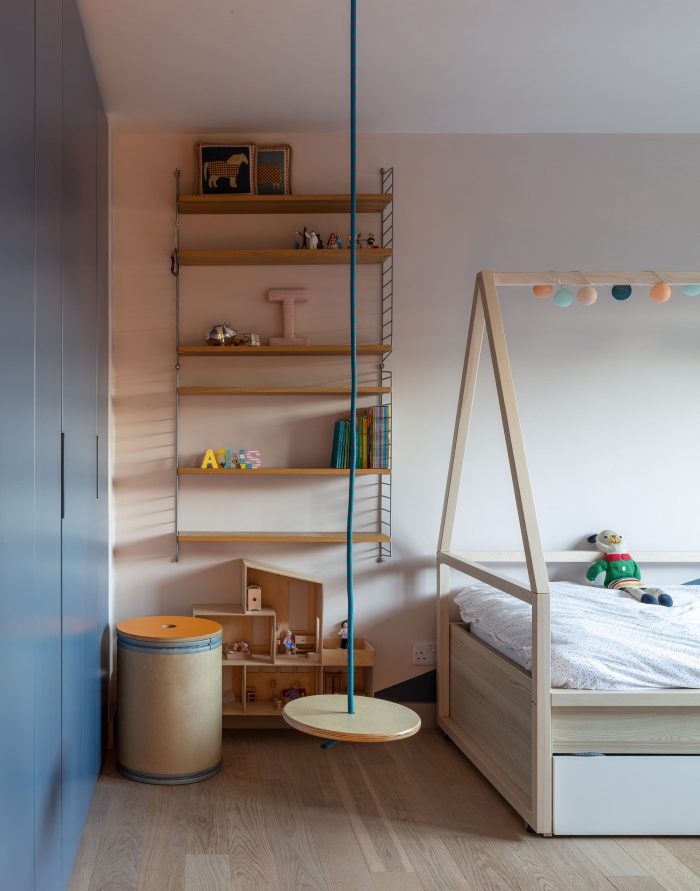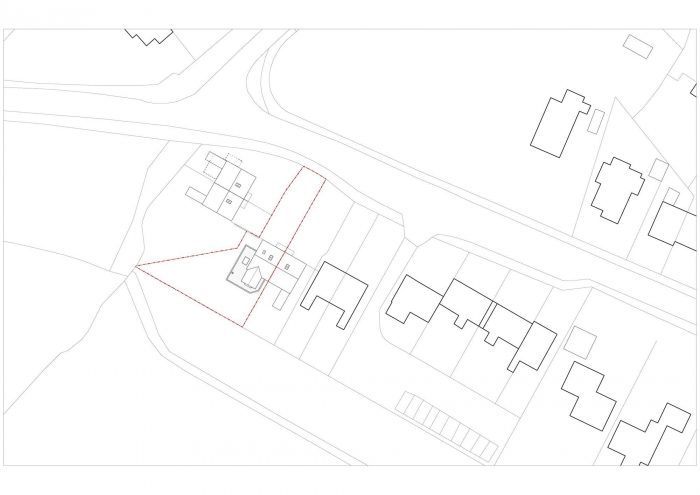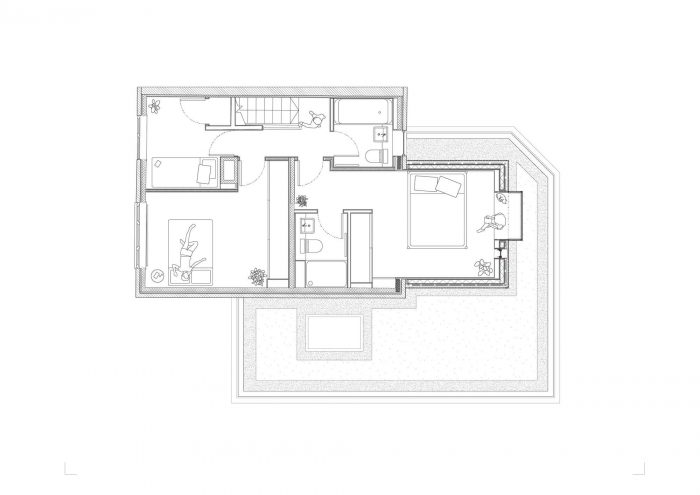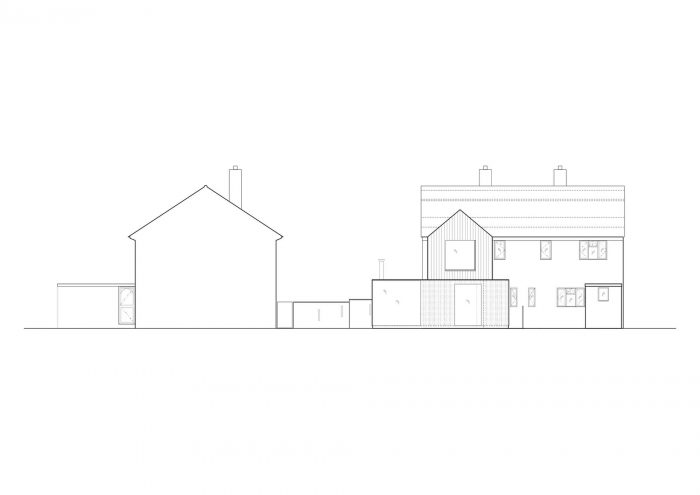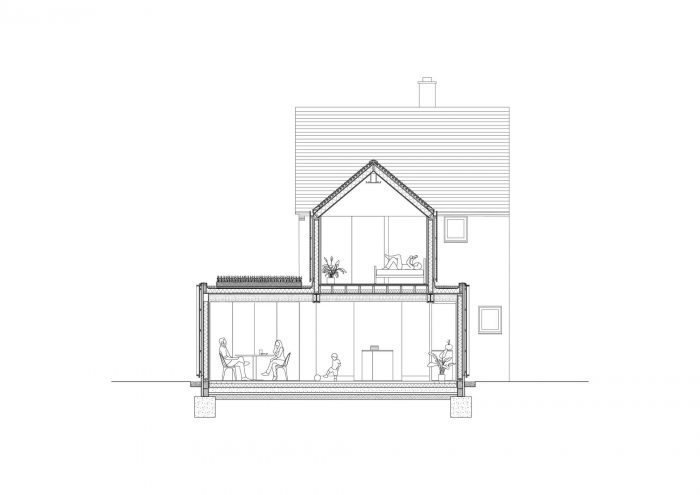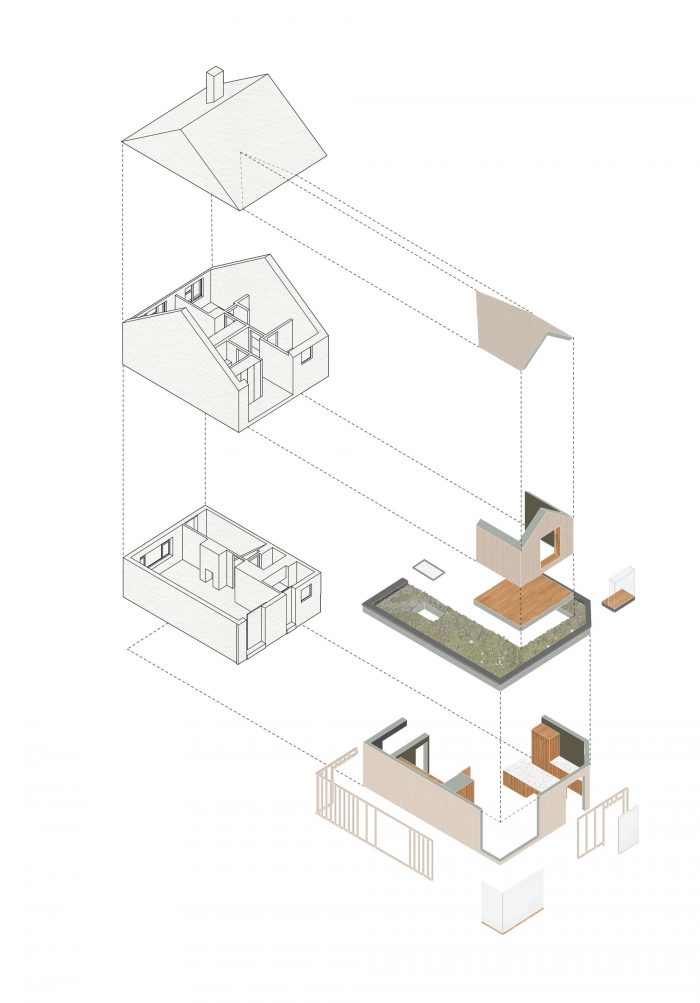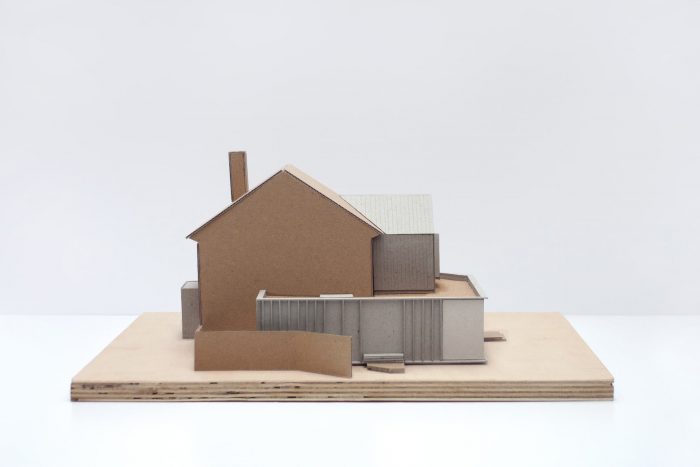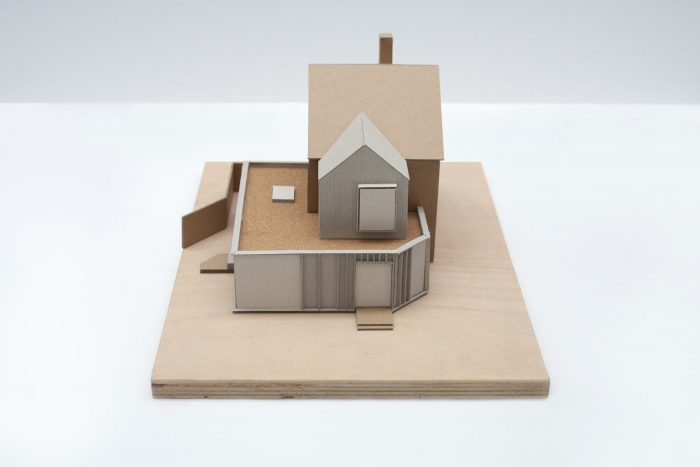Corner view house是由建筑师和认证的Passivhaus设计师Tom Bell为他的伴侣Sophie Bell和他们的家人Isla(7岁)和Ada(5岁)以及他们的狗Woody建造的。Corner View House重新设计了一个正统的20世纪60年代的地方当局的房子,在科茨沃尔德提供了一个现代家庭住宅,那里的前委员会房产经常被忽视和低估。
Corner view house was built by Architect and Certified Passivhaus Designer Tom Bell for his partner Sophie Bell managing director at the creative agency Toast and their family Isla (7yrs) and Ada (5yrs) and their dog Woody. Corner View House reimagines an orthodox 1960’s local authority house to deliver a contemporary family home in the Cotswolds, where ex-council properties are often overlooked and undervalued.
该项目挑战了这些先入为主的观念,探索并释放了我们农村战后社会住房存量中固有的适应灵活性,以倡导改造的重要性。通过应用Passivhaus结构优先原则和使用现代建筑方法,将该物业包裹在一个现代木材扩展中,提供了一个提升房屋环境复原力的机会。该设计提升并丰富了现有的围护结构,同时对当地的保护区和AONB的背景保持敏感。
The project challenges these preconceptions and explores and unlocks the adaptive flexibility inherent within our rural post-war, social-housing stock, to champion the importance of retrofit. Wrapping the property in a contemporary timber extension afforded an opportunity to upgrade the environmental resilience of the house through the application of Passivhaus fabric first principles and by using modern methods of construction. The design elevates and enriches the existing envelope, whilst remaining sensitive to the local Conservation Area and context of the AONB.
为了加快项目进度并确保质量控制,扩建部分采用SIP技术在现场外制作。与工程师在一个共享的计算机模型上合作,有可能在现场浇筑地基时同时制作门窗和结构外壳,在几周内达到水密性。结构区内的SIP的高绝缘性和气密性值使内部地板空间和天花板体积最大化(见主卧室)。胶合板横梁是对SIP技术的补充,并减少了热桥的产生。
To accelerate the program and ensure quality control, the extension was fabricated off-site using SIP technology. Working in collaboration with the engineers on a shared computer model, it was possible to fabricate the windows, doors, and structural shell simultaneously while the foundations were poured on-site, achieving water tightness within weeks. The high insulative and airtight values of SIPs within the structural zone maximize internal floor space and ceiling volume (see the master bedroom). Glulam beams complement the SIP technology and reduce thermal bridging.
它们被用来支撑大的转角窗口。在内部,我们的愿望是重新配置现有的布局,以创造一系列有趣和适应性强的家庭空间,同时为家庭工作和休息提供私人空间。扩建部分容纳了一个大型的开放式厨房、生活空间和新的非正式入口,在视觉上将公共区域和邻近的田地连接起来。
They have been used to support the large corner window opening. Internally, the aspiration was to reconfigure the existing layouts to create a series of fun and adaptable family spaces, whilst accommodating private niches for home-working and respite. The extension houses a large open-plan kitchen, living space, and new informal entrance, visually connecting the communal areas with the adjacent fields.
靴室门廊和隐藏的摇臂门采用了日本的 “烧木 “技术,为这些人流密集的区域创造了坚固的表面。该技术还使落叶松具有高度的抗虫害能力,这一点至关重要,因为门廊也被用作冬季原木仓库。
The boot room porch and hidden jib door experiment with the Japanese Shou sugi ban technique of charred wood to create a robust finish to these highly trafficked areas. The technique also renders the larch highly resistant to insect damage which is crucial as the porch is also utilized as the winter log store.
在一楼,增加了一个新的卧室和浴室。卧室有一扇窗,可以俯瞰下面的生物多样性野花屋顶和山谷。儿童卧室以一个秋千为中心,充满了童趣,而楼梯上有一个滑梯。材料的选择是诚实的、有触感的和手工制作的。木材的使用是不可或缺的,垂直的西伯利亚落叶松覆盖层提供了耐用性和快速的外观颜色。
On the first floor, a new bedroom and bathroom were added. The bedroom features an oriel window that overlooks the biodiverse wildflower roof and valley below. The children’s bedroom is playful with a swing as the centerpiece, while the staircase features a slide. The material selection is honest, tactile, and crafted. The use of timber is integral, vertical Siberian larch cladding provides durability and a color-fast appearance.
经过压力处理的木材很少打结,很容易操作,而且浪费很少。在内部,定制的橡木细木工制品提示了外墙强烈的垂直韵律,静音的绿色调反映了周围的景观,平静而亲切的色调框住了科茨沃尔德。
The pressure-treated timber has few knots, is easy to work with, and has little wastage. Internally, bespoke oak joinery cues the strong vertical rhythm of the façade, and the mute green color palette reflects the surrounding landscape, with calming and intimate tones framing the Cotswolds beyond.
Architects: Freehaus
Area : 130 m²
Year : 2021
Photographs :Nicholas Worley
Manufacturers : Maxlight and Arch Glazing, Russwood
Electrics : Collett & Brooks
Architecture : Tom Bell
Contractor : Tim McKibbin
Carpentry : John Wilks
Plumbing : Cotswold Combustion
Joinery : Chameleon Co
City : Churchill

